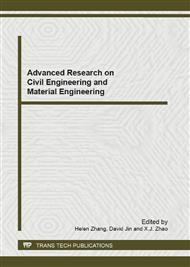p.85
p.89
p.94
p.99
p.103
p.107
p.112
p.119
p.125
Study on Parameter Optimization of Copper Smelting in Civil Engineering
Abstract:
The process of copper converter smelting has very complex nonlinear relations, so that its mathematical model can not be created accurately. In this paper, considering that the LS-SVM has strong nonlinear approximation ability, the organization and optimization model based on LS-SVM to assist copper smelting production is proposed, namely compensating the original model and improving the precision of the model using LS-SVM. To simulate using real production data of a copper smelting company, the result shows that this model’s precision is high, this can be used to guide the practice production and it is very effective in civil engineering
Info:
Periodical:
Pages:
103-106
Citation:
Online since:
September 2012
Authors:
Price:
Сopyright:
© 2012 Trans Tech Publications Ltd. All Rights Reserved
Share:
Citation:


